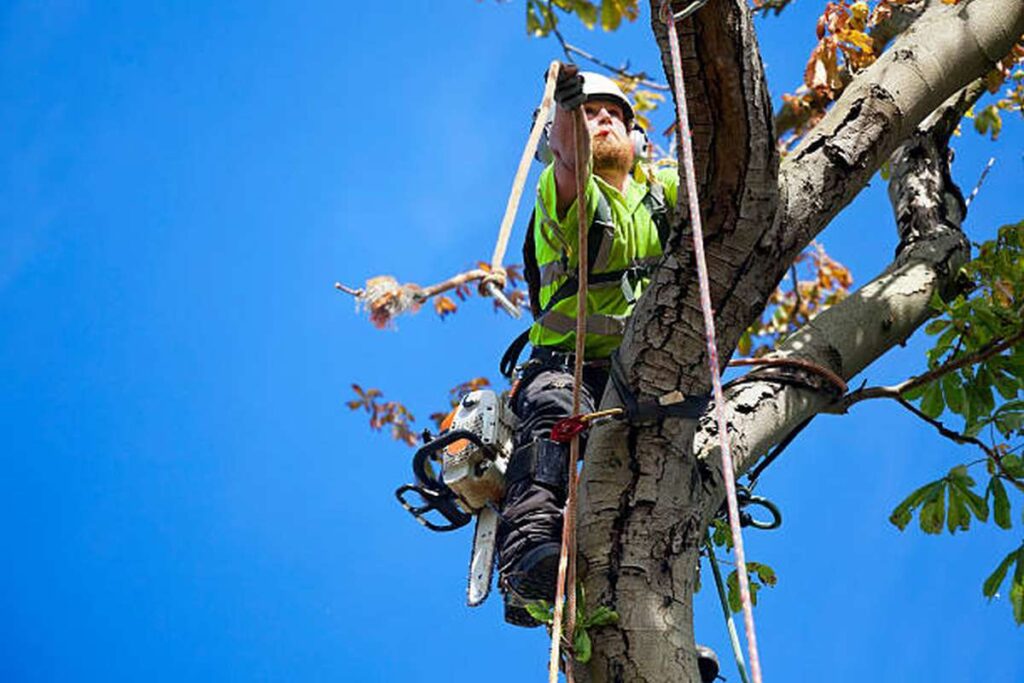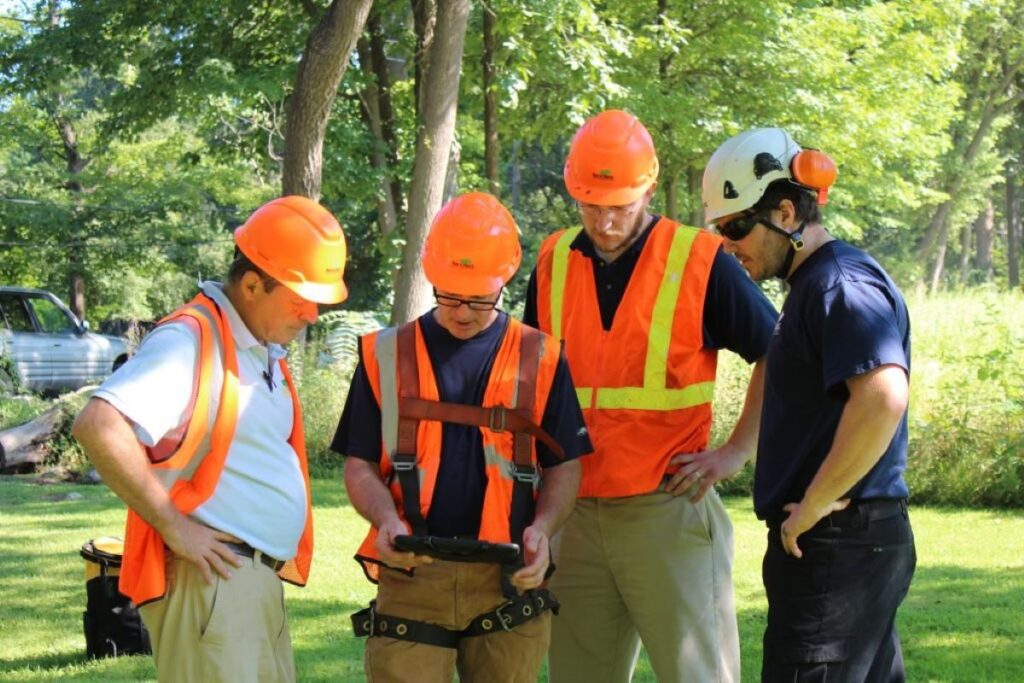5 Hidden Dangers of Delaying Professional Tree Removal in Sydney
Why is Professional Tree Removal Important in Sydney?
Professional tree removal is a crucial service in Sydney’s urban environment, where careful management is needed to maintain the delicate balance between nature and infrastructure. The busy streets and residential areas of Sydney are home to numerous trees that not only beautify the city but also provide important environmental benefits.
Challenges Facing Trees in Urban Areas
Trees in cities face specific difficulties:
- Limited space for growth
- Exposure to pollution
- Competition with buildings and roads
- Vulnerability to diseases and pests
- Stress from weather conditions
These factors can harm the health of trees, turning what was once a valuable asset into a potential danger. Professional tree looping services are essential in preserving this urban ecosystem by spotting and resolving risks before they worsen.
Risks of Delaying Tree Removal
When property owners put off necessary tree removal, hidden dangers can arise:
- Structural instability leading to unexpected falls
- Root system deterioration affecting nearby buildings
- Disease transmission to healthy vegetation
- Property value decline due to unsafe conditions
- Legal liability from potential accidents
Importance of Professional Expertise
Sydney’s local council regulations require specific permits for tree removal, making professional expertise essential for compliance. Licensed arborists have the knowledge to evaluate tree health, identify potential risks, and carry out safe removal procedures while following local guidelines.
The cost of ignoring these warning signs goes beyond money – it endangers public safety and environmental health. Professional intervention guarantees proper risk assessment and environmentally friendly removal methods, safeguarding both property and people.
How Do Falling Trees Pose a Risk in Sydney?
Unhealthy or damaged trees create significant hazards in Sydney’s urban landscape. These compromised trees can unexpectedly fall, causing severe property damage, personal injury, or disruption to essential services like power lines and communication networks.
Factors Contributing to Tree Instability
Several factors contribute to tree instability:
- Root System Damage: Construction work, soil compaction, or underground utility installation can weaken a tree’s foundation
- Disease and Decay: Internal rot weakens the tree’s structural integrity
- Storm Damage: High winds and heavy rainfall can create stress points in branches and trunks
- Age-Related Deterioration: Older trees become more susceptible to failure
Warning Signs of Declining Tree Health
Property owners should watch for these warning signs of declining tree health:
- Visible Tree Structure Issues
- Leaning trunk
- Cracks or splits in major branches
- Multiple trunks with weak attachment points
- Exposed or damaged roots
- Foliage and Branch Concerns
- Dead or hanging branches
- Wilting or discoloured leaves
- Premature leaf drop
- Thinning canopy
- Trunk and Root Problems
- Mushrooms or fungal growth at the base
- Soft, crumbly, or hollow areas
- Peeling or missing bark
- Soil heaving around the root zone
Trees displaying these symptoms require immediate professional assessment. The risk escalates during Sydney’s storm season when compromised trees face additional stress from strong winds and saturated soil conditions. Dead or dying branches can become projectiles in high winds, while unstable root systems may fail to anchor trees in waterlogged ground.
Vulnerability of Neighbouring Properties
Neighbouring properties face particular vulnerability from falling trees. A tree’s impact radius often extends well beyond its height due to the momentum of falling branches and trunk sections. Property owners hold responsibility for damage caused by trees on their land, making regular health assessments crucial for risk management.
2. What Impact Do Decaying Roots Have on Structures in Sydney?
Decaying tree roots create significant structural hazards beneath Sydney properties, often undetected until substantial damage occurs. As roots decompose, the soil structure changes dramatically, leading to:
- Ground Settlement: Decomposing roots leave voids in the soil, causing the ground to sink and settle unevenly
- Foundation Issues: These voids can destabilise building foundations, resulting in costly structural repairs
- Infrastructure Damage: Underground utilities become vulnerable to displacement or breakage
The decomposition process of tree roots varies based on several factors:
- Small roots (< 1cm): 1-2 years
- Medium roots (1-5cm): 3-5 years
- Large roots (> 5cm): 5-10+ years
Property owners often notice these warning signs of root decay impact:
- Driveway Deterioration
- Sudden cracks appearing in concrete
- Uneven surface development
- Sinking sections of pavement
- Patio Problems
- Tilting or shifting of pavers
- Gaps between tiles
- Water pooling in new areas
- Wall and Foundation Signs
- Hairline cracks in walls
- Doors and windows becoming difficult to close
- Uneven floor levels
The soil type in Sydney significantly influences the severity of these issues. Clay soils, common in many Sydney suburbs, are particularly susceptible to movement when root systems decay. This soil characteristic amplifies the structural impact, potentially leading to:
- Accelerated settlement rates
- More pronounced surface deformation
- Higher repair costs
Professional arborists recommend removing problematic trees before root decay begins, as the cost of preventive removal is significantly lower than addressing structural damage after it occurs. Property owners should consider scheduling regular inspections to identify potential root-related issues before they escalate into major structural concerns.
3. Why Are Emergency Situations After Storms a Concern for Tree Owners in Sydney?
Storm events in Sydney create high-risk scenarios for property owners with trees on their land. Strong winds, heavy rainfall, and lightning strikes can turn stable trees into immediate dangers that need urgent professional attention.
Warning Signs of Tree Hazards After Storms
Trees showing structural changes after a storm are critical warning signs:
- Visible lean or tilt – A sudden change in tree position indicates compromised root stability
- Exposed root system – Soil erosion around the base reveals vulnerable anchor points
- Splitting or cracking – New trunk or branch fractures weaken the tree’s structural integrity
- Hanging or broken branches – Partially attached limbs create unpredictable fall zones
Increased Risks from Saturated Ground Conditions
The saturated ground conditions following storms increase these risks. Water-logged soil reduces root grip strength, making trees more likely to topple without warning. This danger grows when strong winds continue after the initial storm passes.
Urgent Removal Indicators for Property Owners
Property owners should watch for these urgent removal indicators:
- Trees leaning towards buildings or high-traffic areas
- Large branches suspended over power lines
- Root plates lifting from the ground
- Multiple major branches with fresh storm damage
- Trees blocking emergency access routes
Professional Assessment of Storm-Damaged Trees
Professional arborists evaluate storm-damaged trees using specific risk assessment criteria:
- Target zone assessment
- Soil stability testing
- Branch attachment strength
- Root system evaluation
- Trunk structural analysis
The Importance of Timely Removal
Delaying the removal of storm-compromised trees creates escalating safety risks. Each subsequent weather event increases the chances of catastrophic failure. Sydney’s variable climate patterns mean damaged trees face ongoing stress from changing conditions.
Local Regulations and Emergency Situations
Local council regulations require proper assessment and permits for tree removal, yet emergency situations often qualify for expedited processing. Professional tree services maintain relationships with local authorities to streamline urgent removal procedures when safety concerns are paramount.

4. How Does Delayed Tree Removal Contribute to the Spread of Disease and Pests in Sydney’s Environment?
Leaving diseased or pest-infested trees standing can create a breeding ground for pathogens and insects that can harm nearby plants. These weakened trees serve as hosts, allowing diseases and pests to multiply and spread throughout Sydney’s urban forest.
Common signs of tree disease and pest infestation include:
- Discoloured or spotted leaves
- Unusual growths or cankers on bark
- Holes or tunnels in the trunk
- Premature leaf drop
- Thinning canopy
- Visible insect activity
The spread of disease and pests from affected trees can occur through:
- Wind dispersal – Fungal spores and insects carried to neighbouring trees
- Root contact – Underground transmission between interconnected root systems
- Insect vectors – Pests carrying pathogens between trees
- Water splash – Rain spreading spores from infected areas
A single infected tree can impact trees within a 50-metre radius, creating a chain reaction of declining tree health across Sydney neighbourhoods. This radius expands as the infestation progresses, potentially affecting entire streets or blocks.
The cost implications of delayed removal become significant when considering:
- Treatment expenses for multiple affected trees
- Removal costs for additional compromised trees
- Property damage from falling branches
- Decreased property values due to deteriorating landscapes
- Council fines for failing to manage diseased trees
Professional arborists identify specific diseases and pests through:
- Visual inspections
- Laboratory testing of samples
- Assessment of spread patterns
- Evaluation of environmental factors
Early intervention through proper tree removal prevents these issues from escalating into widespread environmental problems. The removal process includes specialised techniques to contain diseases and pests, preventing their spread during the operation.
5. What Are the Financial Implications and Safety Risks Associated with Postponing Tree Removal in Sydney?
Delaying tree removal creates a cascade of financial burdens that multiply over time. Property owners face escalating costs when structural damage occurs from untreated tree issues:
Property Repair Expenses
- Foundation repairs: £5,000-£25,000
- Driveway reconstruction: £3,000-£8,000
- Roof damage restoration: £2,000-£15,000
- Plumbing system repairs: £500-£5,000
The cost of emergency tree removal services rises significantly when urgent situations arise. Standard tree removal might cost £500-£2,000, while emergency services can surge to £3,000-£5,000 due to:
- After-hours callout fees
- Specialised equipment requirements
- Additional labour for complex removals
- Risk premiums for dangerous conditions
Insurance companies might deny claims related to tree damage if property owners neglect proper tree maintenance. This leaves homeowners responsible for:
- Full repair costs
- Temporary accommodation expenses
- Legal fees in liability cases
- Increased future insurance premiums
For instance, a falling tree can cause significant damage to a house, leading to substantial repair expenses. Moreover, property owners may face liability issues if their neglected trees cause damage to neighboring properties.
Safety risks escalate when tree removal is postponed:
Workplace Health and Safety Issues
- Restricted site access for emergency services
- Compromised evacuation routes
- Increased risk to workers during eventual removal
- Higher likelihood of accidents during routine property maintenance
The financial impact extends beyond immediate property boundaries. Neighbouring properties affected by neglected trees may pursue legal action, resulting in:
- Court-ordered compensation payments
- Legal defence costs
- Mandatory emergency tree removal
- Potential fines from local councils
Professional tree removal services in Sydney offer payment plans and early intervention options that prove more cost-effective than dealing with emergency situations. Regular tree assessments help identify potential issues before they develop into costly problems requiring urgent attention.
How Can Professional Arborists Help Mitigate These Hidden Dangers in Sydney?
Professional arborists have the specialised knowledge and expertise needed to identify and address tree-related risks in Sydney’s urban environment. These qualified professionals conduct thorough health assessments using advanced diagnostic tools and techniques to evaluate:
- Tree structural integrity
- Root system health
- Disease presence and progression
- Pest infestations
- Soil conditions and stability
Through detailed inspections, arborists create customised management plans that include:
Preventive Care Measures
- Strategic pruning schedules
- Soil amendment recommendations
- Root system management
- Disease treatment protocols
Risk Assessment Services
- Identification of weak branch unions
- Analysis of trunk decay
- Evaluation of root plate stability
- Assessment of tree lean angles
Arborists’ expertise goes beyond basic tree maintenance to include specialised services such as:
- Sonic tomography for internal decay detection
- Resistograph testing for wood density measurement
- Root mapping using ground-penetrating radar
- Crown reduction and restoration techniques
These professionals also provide vital documentation for council permits and insurance purposes, ensuring all tree work complies with Sydney’s local regulations. Their knowledge of native species and local environmental conditions enables them to make informed decisions about preservation versus removal, helping property owners maintain safe and healthy landscapes while protecting their investments.
Professional arborists are the first line of defence against the hidden dangers of declining trees, offering proactive solutions that prevent costly damages and ensure public safety.
What Steps Can Property Owners Take for Proactive Tree Management in Sydney?
Property owners play a vital role in maintaining safer landscapes through proactive tree management. A strategic approach to tree care helps prevent the hidden dangers associated with delayed professional tree removal in Sydney.
Essential Steps for Property Owners:
- Schedule bi-annual professional inspections to assess tree health and identify potential risks
- Document any changes in tree appearance, including discoloured leaves, bark damage, or unusual growth patterns
- Maintain detailed records of previous tree work, treatments, and assessments
- Create a customised maintenance calendar based on tree species and seasonal requirements
- Build a relationship with qualified arborists for ongoing guidance and support

Key Warning Signs to Monitor:
- Leaning or tilting trunks
- Exposed or damaged root systems
- Dead or hanging branches
- Fungal growth on bark or roots
- Soil heaving around the tree base
Property owners should implement a systematic approach to tree care, incorporating regular visual checks between professional assessments. This vigilance helps identify issues before they escalate into serious safety hazards.
Recommended Safety Measures:
- Keep trees properly pruned and shaped
- Remove dead or diseased branches promptly
- Maintain appropriate soil conditions and drainage
- Consider potential impacts on neighbouring properties
- Stay informed about local council regulations regarding tree removal
A proactive management strategy creates resilient urban landscapes while protecting property value. By partnering with qualified arborists and maintaining consistent oversight, property owners contribute to the safety and sustainability of Sydney’s urban forest.
Related : Creative Firewood Storage Solutions for Small and Large Spaces

